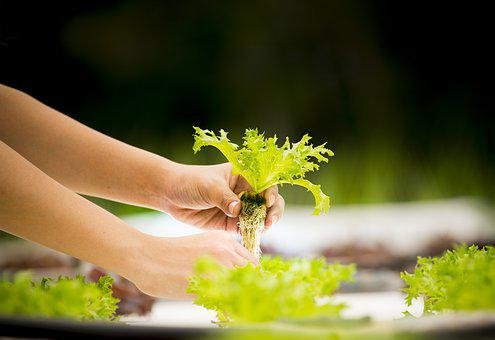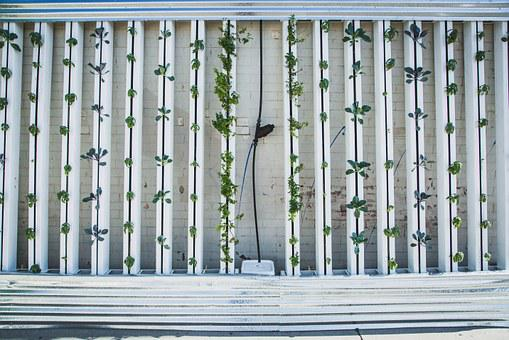 Loading... Please wait...
Loading... Please wait...Save Money. Grow Your Own!
Fast Plain Box Shipping.
We ship to the US & Canada.
Grow Your Own!
How to Setup the Perfect Hydroponic Garden
Posted on 22nd Aug 2022
A hydroponic garden lets you grow plants without having to use soil. This type of gardening is ideal for people who want to save on space, as hydroponic gardens can be set up indoors. The garden has a 30-50 percent higher yield than a conventional garden, and the plants grow twice as fast. These gardens also require less water than traditional gardens. Hence, hydroponic gardens are a great option for those who want to be more sustainable. If you're interested in setting up a hydroponic garden, here's what you need to do:

1. Decide What Type of Plants You Want to Grow
The variety of plants you can grow in a hydroponic garden is virtually limitless. You can choose to grow vegetables, fruits, herbs, or flowers. The most important thing is to choose plants that are compatible with the type of hydroponic system you are using.
For example, if you use a nutrient film technique (NFT) system, you will want to grow plants that do not have a deep root system. The roots will be suspended in a thin stream of water and nutrients. If you are using a wick system, on the other hand, you can grow any plant.
So how do you decide which plants to grow? One way is to consider what types of vegetables or fruits you like to eat. Another way is to research which plants best suit your hydroponic system. Many online resources can help you with this task. Finally, don't be afraid to experiment. Try growing different types of plants and see which ones work best for you.
2. Choose the Right Location
When it comes to choosing the right location for your hydroponic garden, there are a few things you need to consider. First, you must ensure that the spot gets plenty of sunlight. Most plants need at least six hours of sunlight daily to grow properly. If you're setting up your garden indoors, ensure the spot has plenty of natural light.
Second, you need to think about the climate. Hydroponic gardens require a lot of water, so you need to make sure that the area is not prone to drought or periods of excessive rainfall. It would help if you also ensured that the temperature was stable and not too hot or cold.

Finally, it would help if you thought about how much space you have available. Hydroponic gardens can be set up in small or large spaces, depending on your needs. If you're limited space, you will need quiet inline fans to ensure proper ventilation for your plants. Consider using vertical space, such as shelves or hanging gardens, to maximize your yield.
3. Set Up Your Hydroponic System
There are many different types of hydroponic systems, but they all have one thing in common: they allow plants to grow without soil. Instead, plants are grown in a solution of water and nutrients. The type of hydroponic system you choose will depend on the plants you're growing and the size of your garden.
Some of the most popular hydroponic systems include:
- Wick system: This is one of the simplest hydroponic systems, ideal for small gardens. Plants are grown in a container of water and nutrients, and a wick delivers the solution to the roots.
- Flood and drain system: This system uses a timer to flood the grow bed with nutrient-rich water and then drains it back into a reservoir. This type of system is great for larger gardens.
- Aeroponic system: This is the most advanced type of hydroponic system, and it's perfect for those who want to grow plants quickly. Plants are grown in a chamber of misted water and nutrients, and their roots are constantly aerated.
4. Choose the Right Grow Lights
Regarding hydroponic gardening, one of the most important decisions you'll have to make is what type of grow lights to use. Different plants require different light levels, so choosing wisely is important. You also need to consider the size and layout of your garden.
If you're starting, it might be a good idea to stick with easy-to-grow plants like lettuce or herbs. These plants don't require a lot of sunlight or space and can be grown in small spaces. If you're feeling adventurous, you can try growing more exotic plants like tomatoes or strawberries. Do your research first and ensure that your chosen plants are compatible with hydroponic gardening.
5. Choose the Right Hydroponic Nutrients
For plants to grow properly, they need a balanced diet of nutrients. When growing plants hydroponically, you need to ensure that the water you use is enriched with the proper nutrients.
There are two main types of nutrient solutions: organic and synthetic. Organic nutrients are made from natural ingredients, while synthetic nutrients are made from chemicals. Organic nutrients are a better choice for those who want to grow healthy plants without using chemicals. They can be a little more expensive, but they're worth the investment.
Synthetic nutrients are a good choice for those who want to get the most out of their plants. They're cheaper than organic nutrients and provide all the nutrients your plants need to grow big and strong.
6. Set Up a Regular Maintenance Schedule
Once your hydroponic garden is up and running, setting up a regular maintenance schedule is vital. This will ensure that your plants are getting the light, water, and nutrients they need to grow. It will also help you spot problems early on to fix them before they become serious.
Some of the things you'll need to do as part of your maintenance schedule include:
- Check the pH level of your nutrient solution regularly and adjust it as needed.
- Check the level of nutrients in your solution and replenish them as needed.
- Cleaning your system regularly to prevent algae and bacteria from buildup.
- Inspect your plants regularly for pests and diseases.
Growing a successful hydroponic garden takes time and patience. Don't expect to see results overnight; don't get discouraged if things don't go as planned initially. You'll likely have to wait several months before harvesting your fruits or vegetables. But trust me, it's well worth the wait. Once you taste the delicious fruits and vegetables grown in your hydroponic garden, you'll never want to go back to supermarket produce again.
